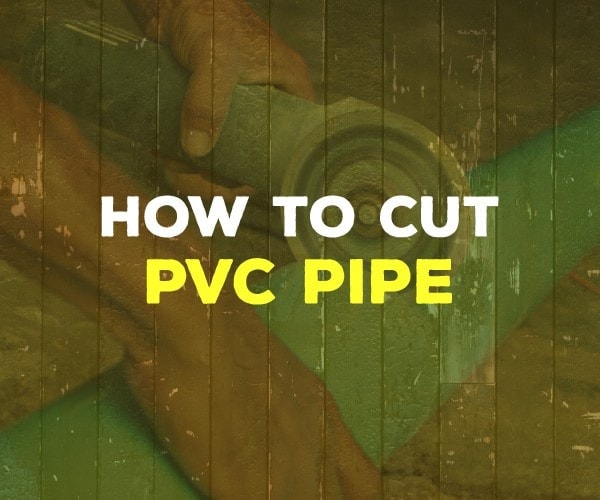PVC pipe, short for polyvinyl chloride pipe, is one of the most common materials used for residential plumbing today.
If you’re working on a plumbing project that requires cutting PVC pipe, a little knowledge goes a long way towards making the cut easier.
Luckily, no matter the method that you use, it’s really not that difficult or intimidating to cut PVC pipe to your required specifications.
That said, an understanding of the process and the right tools make the job that much easier, prevent errors, and keep you safe.
Here’s how to cut PVC pipe for your next project.
What You’ll Need
You don’t need many tools to cut PVC pipe. In fact, the project typically only requires a single cutting tool in addition to a tape measure and pencil.
The exact cutting tool that you’ll need depends on the method that you choose.
Here’s what you’ll need:
Method I: Hacksaw
- Hacksaw
- Tape Measure
- Carpenter’s Pencil
Method II: Pipe Cutter
- Plastic Pipe Cutter
- Tape Measure
- Carpenter’s Pencil
Method III: Miter Saw
- Miter Saw
- Tape Measure
- Carpenter’s Pencil
Method I: Hacksaw
Frugal DIYers rejoice! It’s easy to cut PVC pipe with a hacksaw.
Once the standard method to perform this cut, a hacksaw requires a little more effort than the other methods on this list, but it’s undoubtedly the most simple and straightforward.
Here’s how to use a hacksaw to cut PVC pipe:
Step I: Measure
Measure and mark the location of your cut.
If you’re cutting a new length of PVC pipe, you can also clamp the pipe down to your workbench to prevent it from rolling or otherwise moving during the cut.
Step II: Cut
Use the hacksaw to cut through the pipe on the mark you made. Use the traditional back and forth motion until you’re all the way through the pipe.
Step III: De-Burr
A hacksaw will likely leave rough edges, known as burrs, at the cut point. Use a utility knife to remove (“de-burr”) the rough bits from the end.
Method II: Pipe Cutter
Not a fan of the hacksaw method? Then a pipe cutter just might be for you.
A pipe cutter makes it even easier to cut through PVC pipe. It requires minimal effort and is also a very cheap option.
Here’s how to cut PVC pipe with a pipe cutter:
Step I: Measure
Once again, start this project by measuring the length of the pipe and marking where you want to make the cut.
Step II: Cut
Line the blade of the pipe cutter up with the cut line.
The pipe cutter you use needs to be large enough for the blade to fit over the diameter of the pipe. This means that pipe cutters are typically best for smaller pipes.
Squeeze the handles of the pipe cutter down to force the blade through the PVC pipe.
The pipe should snap in a clean break with minimal effort. Thicker pipes might require a specialized ratcheting pipe cutter that’s able to apply more force.
Because of the clean cuts that a pipe cutter provides, there will typically be no need to de-burr the edges when using this method.
Method III: Miter Saw
Pull out the big guns by using a miter saw to cut your PVC pipe.
For smaller pipes, a miter saw might seem like overkill, but if you already have one at home, why not use it?
A miter saw is definitely the easiest method to cut PVC pipe with, but it does require a little more safety precaution since it is a power tool.
Here’s how to use a miter saw to cut PVC pipe:
Step I: Measure
Like always, measure and mark the PVC pipe before making your cut.
Step II: Cut
Gently cut through the PVC pipe with your miter saw. Remember to move through the material slowly to prevent accidents.
It’s typically best to rig up some way to clamp the PVC pipe to the actual miter saw during the cut to prevent it from twisting and turning.
The bulky size of a miter saw somewhat limits the types of cuts you can perform, specifically those in tight spaces.
Final Thoughts
Cutting PVC pipe with a hacksaw, plastic pipe cutters, or miter saw is a piece of cake.
The cut is very intuitive and takes just the slightest bit of know-how to perform effectively.
Once you’re done with your PVC pipe project, why not check out some of our other best home DIY projects for anyone to try?

